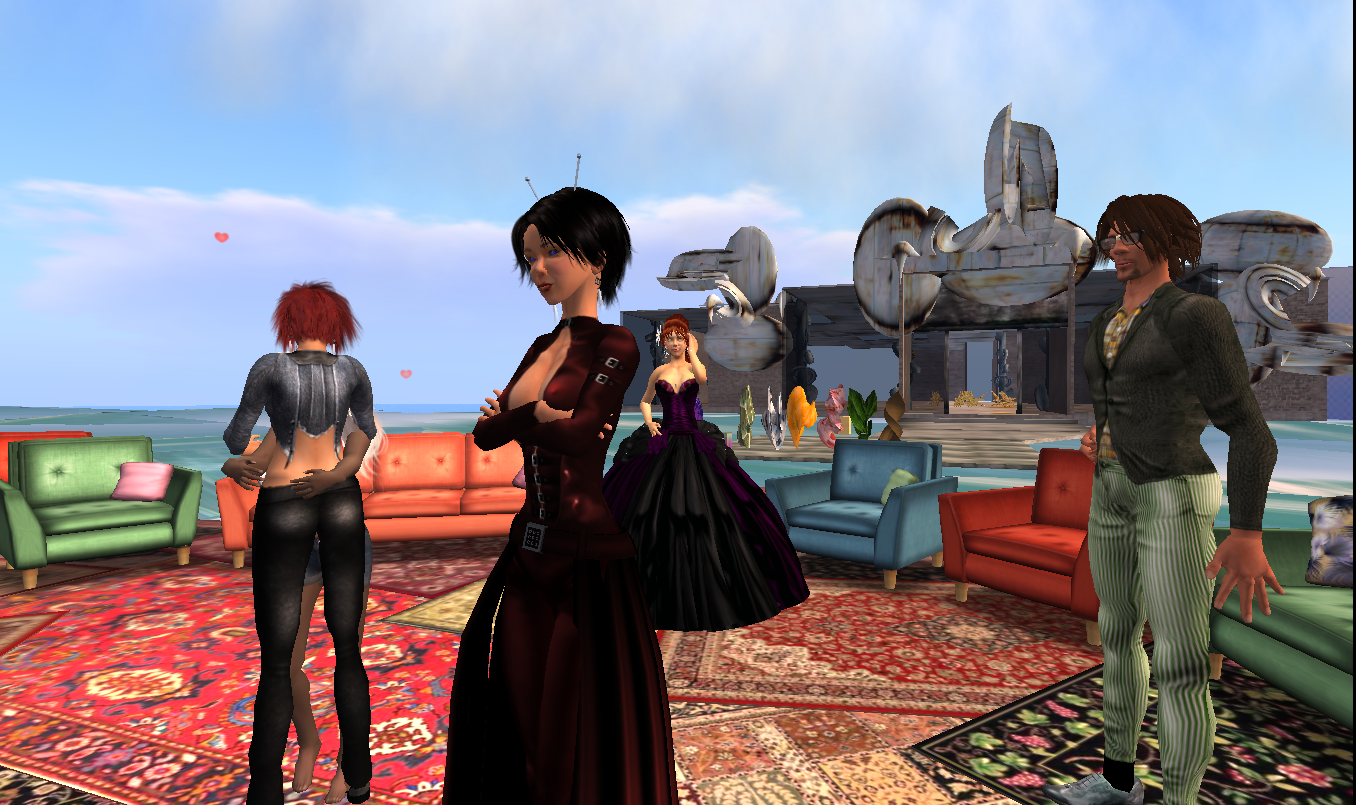WHERE THE PSYCHOLOGICAL INTERIOR MATTERS.
But SL is only a part of the Web. Do we see more focus on the psychological interior once people log-off from online worlds but remain connected to the Web? A good reason to think this is so, is because teenagers are more likely to use IM (74% of teens, compared to 44% of adults) and chat rooms (55% teens, 26% adults). Why does that matter? Well, adolescence tends to be a period of time when the individual pays more attention to their psychological interior. This process of discovery cannot be completed alone – the individual requires ‘knowledgeable others’ who understand innermost feelings. Knowledgeable others are hard to come by in RL, where people tend to be wary of baring their soul. But on the Web, people are more willing to talk about their innermost feelings. The reason why is obvious: Anonymity. One is more relaxed about sharing intimate thoughts when one’s true identity is concealed. As one teenager said:
“Online we have the (mask) of the computer screen. We don’t have to worry about what we look like or what other people think of us”.
Worry over physical appearance goes away when you present yourselves to others purely through text. However, the individual is still obliged to provide some kind of self-description, without which that person would have no identity at all. In disembodied telecopresence, identity construction begins with the selection of a screen name. Other people make their first impression of you from your chosen handle. We also see self-description in the form of personal profiles, which the individual sometimes fills in so as to provide a more comprehensive and detailed self-portrait. This is obviously an autobiographical exercise, and as such it bares comparison to what John B Thompson called a ‘symbolic project’. In his own words:
“To recount to ourselves or others who we are is to retell the narratives- which are continually modified in the process of retelling- of how we got where we are and/ or where we’re going from here”.
BACK TO THE UNITARY SELF?
In the previous essay, we focused on the arguments for the computer and the Web as objects-to-think-with for postmodern concepts of self. Those who adopt this view of identity in cyberspace typically consider the self to be multiple. However, there is another way of looking at the Web (or, perhaps I should say, how people use it) that belies this assumption. This opposing view is sometimes called the ‘Balkanization of the Web’, because it highlights a form of confirmation bias leading ultimately to what Alecks Krotoski called ‘pockets of homogenous groups’. In other words, the communities that form in cyberspace tend to be ‘balkanized’, with like-minded individuals seeking each other out, confirming each other’s attitudes and behaviours and ensuring conformity, while also shutting out those perceived to be part of the larger ‘out-group’.
The Web does present an almost infinite diversity of beliefs, but that gigantic heap has to pass through the much more limited capacity of the human brain. One has no choice but to be very selective with regards to what information one will be exposed to, and what will be disregarded, because the amount of information uploaded to the Web exceeds any person’s ability to absorb all but a fraction of it.
So, an individual filters out that which they do not want to be exposed to, while actively seeking out whatever they are interested in. This self-selection process is not limited to clicking on some hyperlinks but not others, it also occurs whenever somebody builds up a friends-list of people they would like to associate with, or when one allows only authorized comments on a blog. As S. Zhao explained, “overflow of information, combined with individual freedom of choice, works to create a self-selected online environment that’s conducive to the formation of a digital self that’s unitary in nature”.
So, which view is correct? Is the digital self fluid and multiple, or is it unitary and homogenous? There is little doubt that people can and do compartmentalize different parts of their lives in cyberspace. Psychologists have interviewed plenty of participants of chat rooms or MMORPGs who freely admit to experimenting with multiple constructed selves. However, it seems to be the case that, over time, the individual tends towards a more unitary representation of self. While a small percentage of people continue to indulge in roleplay and identity exploration across one or more active alts, generally speaking, there is a correlation between time spent inworld and personality difference, with a person’s online and offline selves becoming less and less distinct as time goes by.
THE USHER OF THE POSTHUMAN ERA.
We are, of course, talking about humans here. But some thinkers see the avatar as being the bare beginnings of a new kind of person, one whose evolution owes more to the semi-directed nature of technological development than to the mindless processes of natural selection. In ‘I Avatar’, Mark Stephen Meadows wrote:
“Perhaps now, when our core emotional and social needs can be displaced into virtual environments and even the people next to us may not be real humans but scripted autonomous avatars… perhaps now when technology no longer becomes an extension of us, but we become an extension of it…the avatar is the usher of the post human era”.
In the final part of this series, we will play around with some ideas of what roleplay in the era of the post human might lead to…




